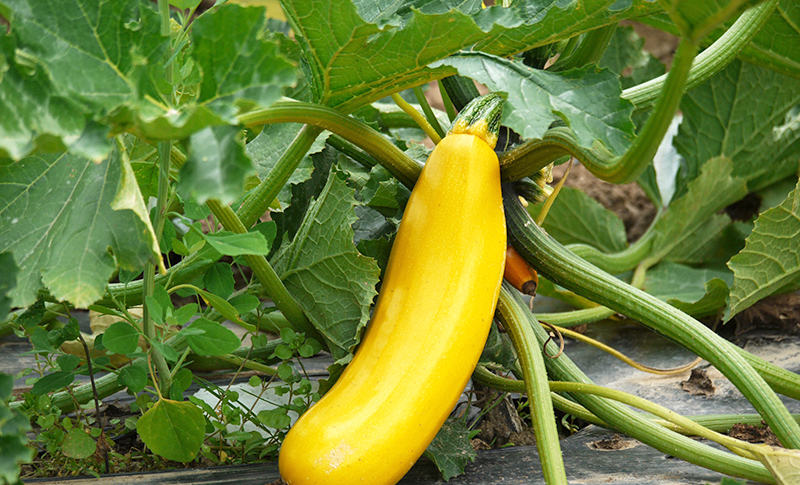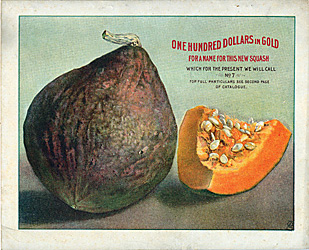Cucurbits

Squash, melons, pumpkins, and cucumbers are all part of the Cucurbitaceae, or gourd, family. They belong to the group of vegetables known as cucurbits. Species of cucurbits are usually monoecious, with separate pollen-bearing (staminate) male flowers and seed-bearing (pistillate) female flowers on the same plant.
Cucurbits were among the plants first cultivated by ancient farmers in much of what is now the US. Archaeologists believe ancient people farming along river banks may have cultivated some form of squash, sunflowers and other seed plants even before they learned to cultivate maize. According to Smithsonian archeologist Bruce Smith and archaeologist Wesley Cowan of the Cincinnati Museum of Natural History, a variety of squash native to the Ozark region of Arkansas and Missouri may be the living ancestor of today's many varieties of summer squash and related gourds. Their research indicates that it was cultivated in this area by native Indians more than 3,000 years ago.
Cucurbits are a staple in Oklahoma gardens and in Oklahoma agriculture. Watermelons and pumpkins are important Oklahoma field crops, and farmer's markets display a wonderful variety of squashes and cucumbers throughout the growing season.
Squash is usually divided into two categories—summer and winter. Summer squashes are harvested and eaten while their skin is still tender. Winter squash grows a thick skin, which helps it keep longer.
Summer Squash
The most common summer squashes are scallop, or pattypan, constricted neck and zucchini. Pattypan is round and flattened, like a plate with scalloped edges. It is usually white. Constricted neck squash is thinner at the stem end than the blossom end, and is classified as either "crookneck" or "straightneck." It is usually yellow. Zucchini squash is cylindrical to clubshaped and is usually green. Zucchini can grow quickly to the size of a baseball bat if not picked frequently. Zucchini and other summer squash taste best when picked between five and eight inches long. One zucchini plant can produce as many as 30 zukes per plant. Zucchini is so prolific in gardens that some people in Pennsylvania have designated an official "Sneak a Zucchini onto your Neighbor's Porch" night (August 8).
Winter Squash
The term "winter squash" dates back to a time when refrigeration and cross country transportation was not as readily available as it is now. "Good keepers" became known as winter vegetables if they would "keep" until December. Winter squash have hard, thick skins and will keep for months if stored in a cool, dark, well-ventilated place.
The best-tasting winter squash is available in early fall. Purchase acorn squash that is almost solid dark green. The best butternut squash has a thick neck and small round base. Ornamental squash, also plentiful during the holiday season, is edible but normally not as flavorful as acorn, butternut and spaghetti squash.
Squash is a good source of fiber, Vitamin C, betacarotene and potassium. Vitamin C helps heal wounds, prevents cell damage, promotes healthy gums and teeth, and strengthens the immune system. Potassium is an electrolyte and is critical to maintaining your heartbeat. It also helps maintain water balance (with sodium) and cell integrity. Betacarotene becomes Vitamin A, which helps your eyes adjust to light changes when you come in from outside and helps keep eyes, skin and mucous membranes moist. Winter squash is a better source of betacarotene than summer squash.
Learning Activities
If you used these facts, along with the "Fruits, Nuts, and Veggies, Oh My" booklet, please let us know by answering a few quick questions. Your class might be featured on the website as a result!
Additional Resources
- Melon Lessons and Resources
- Pumpkin Lessons and Resources
- Lesson about Seed Catalogs: The Art of Growing Things
- More Facts
- Agriculture in Art
- Winter Squash, 1899 by James H. Gregory & Son - Catalogue of Home Grown Seeds (Smithsonian Seed Catalog Collections)
 Winter Squash, 1899 by James H. Gregory & Son
Winter Squash, 1899 by James H. Gregory & Son
